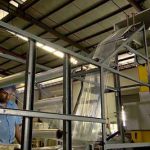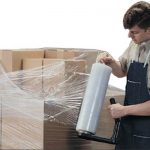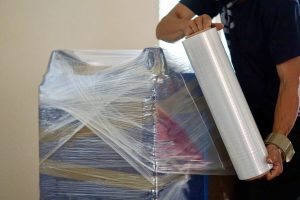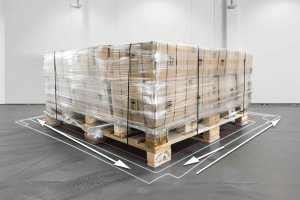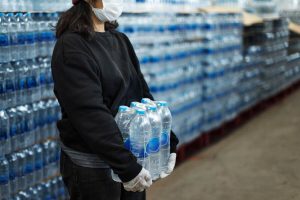
Plastic film extrusion is one of the most significant procedures in shipping and product manufacturing industries. It produced about 25% of all the thermoplastics used in the industry, especially food packaging while the rest of the extruded films are utilized in construction and agricultural machinery.
During the process of plastic film extrusion, the molten polymer is pushed through a circular die. The process is repeated regularly and produces high-quality products of the same quality and precise gauge.
The production of very thin gauge films involves blown film extrusion or cast film extrusion. Different types of high-quality stretch films are produced in Malaysia.
What is Blown Film Extrusion?
Blown extrusion is similar to the simple extrusion, except for the fact that it produces very thin films. It involves extruding a tube of molten polymer through a die and expanding it multiple times to produce a thin film bubble.
The bubble is then molded into different shapes. Numerous types of polymers can be used in this process. However, the majority of the stretch film manufacturers in Malaysia use polyethylene in film extrusion.
What is the Film Extrusion Process?
The most common method of film extrusion is to carry it out vertically upwards. In recent times, horizontal and downwards variation of extrusion has also become popular in the industry. The four most common steps of film extrusion are:
- Initially, the polymer, polyethylene, is in the form of a pellet. It is melted and compacted with the help of heavy machinery to convert the pellet into a viscous liquid. The liquid is then passed through a circular die.
- Air is also inserted via a hole present in the centre of an annular die. As a result, the pressure causes the extruded material to turn into a bubble. Uniform pressure is maintained throughout the process to ensure even the thickness of the film.
- The newly formed bubble is pulled upwards continuously, and the air is blown into the film. Thus, the film cools down from the inside, and the temperature is dramatically reduced inside.
- The product is solidified, and the film produces it in passed through nip rollers, which finish off the bubble and compress it into flat film layers. The film is passed through different rollers like windup rollers, idler rollers, and nip rollers to make sure there is a uniform thickness in the film.
Finally, the film gets ready to be molded into different shapes and products to be used in different industries.
Advantages of Blown Film Extrusion
- Blown films have more balanced in mechanical properties than simple or extruded films because it passes through various machines and traverse directions. Stretch film manufacturers also make sure that the thin film produced is tensile, flexible, and robust.
- A large film, two smaller thin films, or other shapes of the film can be produced via blown film extrusion.
- Excessive trimming is not needed after the film is manufactured, and a single die can be used to make different shapes and sizes of the film.
- Compared to the cast extrusion, the lower melting temperature is required in blown film extrusion. It reduced the cost of manufacturing.
Disadvantages of Blown Film Extrusion
- The cooling process of a blown film is an inefficient process compared to a flat film. A flat film is cooled down by the water or chilling rolls, which has much heating capacity than the air used in blown film extrusion.
- It is difficult to accurately control the thickness of a blown film. The method is quite complicated, and there are a number of factors that can go wrong. Due to the complicated production method, the manufacturing rates for cast film are much higher than the blown films. Both of these types of stretch films are commonly used.
- The danger of air entrapment between the layers of the film and rollers is grave in film extrusion, which can disturb the whole manufacturing process.
It can cause wrinkling or scratches on the newly produced films, and hence they ultimately have to be discarded or reused in other ways. A vacuum is usually installed to avoid air entrapment.
Application and Importance of Film Extrusion
High quality stretch films whether it’s made in Malaysia or other parts of the world have various applications in a lot of sectors. For example:
- The film is used in agricultural packaging
- Stretch film wraps are cost-effective
- Stretch film is recyclable if it is utilized appropriately.
- Used in different kinds of industrial packaging
- The film is an essential component of bags
- Bags
- Preliminary research indicates that blown film extrusion will play a huge role in the massive scale production of carbon nanotube and nanowire films.
The aforementioned application shows how important film extrusion is to various industries especially when it comes to the packaging, shipping, manufacturing, construction and agricultural machinery.
For more information about various stretch films, get in touch with us.

